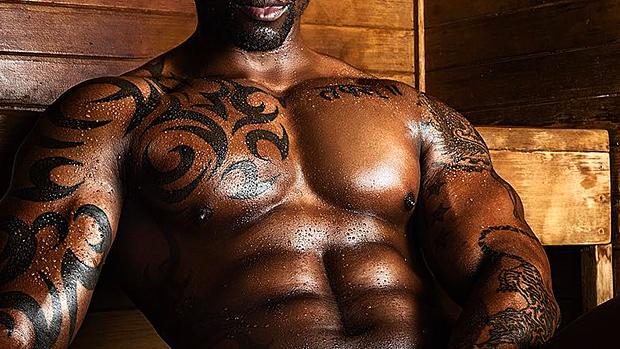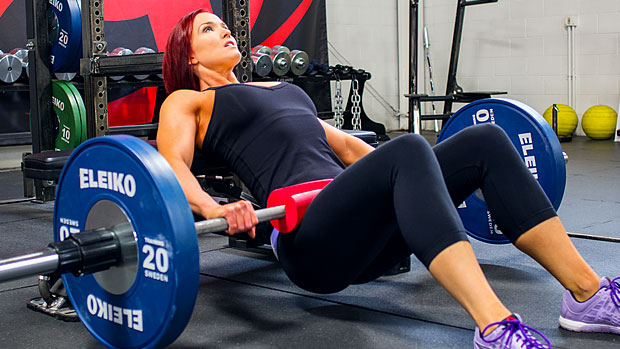Mobility matters. As many experienced lifters have learned, mobility restrictions have harmful repercussions when neglected.
But remember when "functional training" began to take off? What started off as a good thing quickly became a circus act. Unfortunately, a similar trend is emerging alongside the rise of mobility training. It's getting a bit goofy.
Your goals are probably simple: you want to build muscle, lose fat, get stronger, improve performance, and feel better. Unless you're trying to become a yoga instructor or make it as a contortionist, you aren't going to the gym with the sole intent of moving like Gumby.
Within the context of training and performance, the only "mobility" that matters is that which has a direct transfer to what you do in the gym, on the field, or throughout daily life. If your mobility enables you to move well and stay healthy while getting stronger, it doesn't matter if you can touch your toes or do the splits.
Stretching and mobility drills have their place, but there's more to it. The reality is, if you want to improve your mobility and overall function, strength training reigns supreme. Without it, any transient changes that coincide with other modalities won't "stick."
Let's Look at the Facts
Strength training is superior to static stretching for improving mobility and flexibility.
Don't fall for the antiquated notion that strength training will make you stiff. The research is clear: stretching is not superior to lifting in terms of improving mobility and flexibility. A plethora of studies show that lifting heavy loads through a full range of motion (ROM) is more effective than any other modality for increasing "functional" ROM in the hips, shoulders, hamstrings, ankles, lats, pecs, etc.
- One study compared the effects of strength training to static stretching in relation to mobility/flexibility in the hamstrings, hips, shoulders, and knees. The researchers concluded that lifting exercises performed through a full range of motion "can improve flexibility as well as, or better than, typical static stretching regimens." (1)
- Another study conducted on a group of elite judo athletes looked at the effects of a 12-week strength training program on ROM. It concluded that lifting weights led to significant improvements in mobility/flexibility at the shoulders, trunk, and hips. (2)
- Greek researchers looked at a group of men who trained with loads at 40, 60, or 80% of their 1RM or one-rep max. The results showed that higher intensities were linked with greater improvements in mobility/flexibility. That is, the men who trained at 80% of their 1RM were the ones who saw the greatest improvements. (3)
Strength training improves your ability to stabilize and control newfound mobility.
A dead man can do the splits. Flexibility isn't a physical limitation; it's a neuromuscular state that helps limit your movement to prevent injury.
The feeling of being "tight" when you stretch doesn't necessarily mean you need to work on your flexibility. In reality, the "tightness" is a byproduct of your nervous system interpreting the stretch as a potential injury, thus shutting the muscle down.
When you perform loaded exercises through a full ROM with a controlled eccentric descent (the "negative"), you're getting a functional stretch within a stable position. At the bottom of a squat, for example, the muscles of the lower body are lengthened to their most optimal position while tension is maintained.
Unlike static stretching, which is often performed with shoddy technique and compensatory movement patterns, a loaded exercise forces you to control the entire movement without exceeding your body's natural range of motion. When you increase passive flexibility via stretching without being able to stabilize or control that extra ROM, you're risking instability at the joints and increasing your likelihood of injury.
If a lack of mobility is problematic, hypermobility paired with instability is catastrophic. Individuals with hypermobile joints are better off taking a jackhammer to their knees than they are getting under a heavy bar.
Strength training, especially when performed with an eccentric focus, allows your body to find the ideal balance of stiffness, stability, and mobility.
Strength training increases muscle length. Stretching doesn't.
The mechanisms that improve mobility and flexibility as a result of strength training are vastly different than they are for stretching. The notion that stretching increases a muscle's length is completely false.
Stretching is akin to pulling on a rubber band. Sure, it lengthens when you apply tension, but it returns to its normal length when you let go. During a stretch, temporary improvements in flexibility occur primarily due to an increased stretch tolerance and a decreased pain signal associated with reaching a specific muscle length.
It's a neurological process. Nothing within the structure of the muscle actually changes. You're simply able to stretch the muscle "more" before associating it with pain, at which point your nervous system shuts the muscle down.
On the other hand, strength training increases a muscle's stretch potential by changing the actual structure of the muscle. Loaded eccentric exercises lengthen overly tight contractile tissues, enhance joint positioning and torque recruitment, and groove authentic movement patterns.
As a result, the body is able to use its newfound range of motion in the most effective way possible so that transient changes become permanent.
How to Improve Mobility AND Get Big and Strong
The key to improving mobility and relieving overly tight contractile tissues is to perform the best bang-for-your-buck exercises with a slow, controlled tempo while using as much weight as you can safely handle.
To up the ante, you can add in a brief isometric hold in the bottom position. On top of forcing you to maintain tension while enhancing the stretch, paused reps can be beneficial for cleaning up technique, minimizing the stretch reflex, and developing strength out of the bottom of a lift.
The chronically tight areas that need to be addressed in the upper body include the pecs, lats, and thoracic spine. In the lower body, the hip flexors, hamstrings, and calves are the usual suspects of dysfunction. These are the larger, more superficial muscles that shorten over time and place undue stress on the joints.
Here are the best exercises to relieve these areas and improve your mobility:
1. Slight Incline Dumbbell Bench Press
- Using dumbbells helps you open up the chest and promote more scapular upward rotation than the traditional barbell bench.
- The slight incline setup prevents unwanted impingement and helps you avoid excessive internal rotation at the shoulder.
- The 45-degree hand position encourages a huge stretch at the bottom position of the movement and makes it easier to maintain tension throughout.
2. Slight Deficit Push-Up
This exercise encourages scapular upward rotation while enabling you to get a deeper stretch in the bottom position. Execution is crucial, and tempo is the key. The last thing you want to do is lose tension in a vulnerable position and put your shoulders at risk.
Place your hands slightly wider than shoulder-width apart and maintain a 45 to 60-degree angle with your elbows. Your goal should be to find a synergistic balance of stiffness, stability, and mobility.
3. Half-Kneeling X-Pulldown
The dual-handle setup is valuable for its ability to bring the shoulders into a fully overhead stretched position while opening up newfound mobility in the lats and thoracic spine.
While a traditional pulldown has its benefits, what separates the half-kneeling X-pulldown is two-fold. First, it enables you to start thumbs-down (internal rotation at the shoulder) and finish thumbs-up (external rotation at the shoulder), thus creating a spiral motion that's more joint-friendly.
Second, it allows for natural scapular movement by bringing the frontal plane into the equation.
4. Ring Chin-Up
This is a more advanced progression of the half-kneeling X-pulldown. While it's not necessarily "better" than a traditional chin-up or pull-up, it promotes more scapular upward rotation as opposed to a fixed range of motion. Since it involves moving from internal rotation into external rotation, this is more effective for lengthening the lats and thoracic spine while promoting a huge stretch in the bottom position.
5. Snatch-Grip RDL
Stop haphazardly stretching your "tight" hamstrings and start performing heavy snatch-grip RDLs. If you've never done them, get ready to call off work and cancel your weekend plans – you'll be feeling these for a while.
Assuming your hamstrings haven't responded to years of mindless toe-touching, snatch-grip RDLs will be a game-changer for improving your mobility while packing on muscle in your posterior chain. Maintain a neutral spine while keeping the core tight.
6. RFE Bulgarian Split Squat
The traditional half-kneeling hip flexor stretch is one of the most butchered stretches in existence. Most people arch their backs like upside-down dolphins to get more "feel" out of the movement. Load those folks up with two heavy dumbbells, though, and they'll finally experience an authentic hip flexor stretch without any compensatory movement.
On top of enhancing mobility in the hip flexors and adductors, the added load will recruit the glutes and hamstrings, which provides a more functional carryover to other lower-body movements.
7. Single-Leg RDL
Because it's a unilateral exercise, this increases the stretch on the standing leg while forcing the body to remain stable throughout the entire movement. Unlike a standing toe touch, it recruits the glutes, hip flexors, and adductors in a dynamic fashion so there's carryover into real-life training and performance.
8. Weighted Single-Leg Calf Raise
Any type of squat, deadlift, or lunge variation requires a great degree of ankle mobility and stability. When neglected, locked-up ankles can wreak havoc on the entire body and lead to chronic hip and knee pain.
The problem is, the usual prescription for ankle restrictions revolves around soft-tissue work, band mobilizations, etc. While those have their benefits, you're missing out on an opportunity to lengthen and activate the tissues if you never add load.
Performing single-leg calf raises with a slow tempo and using pauses at the bottom to eliminate the stretch reflex can bridge the gap between mobility and function.
References
- Whitehead JR et al. Full Range Resistance Training Versus Static Stretching: Effects on Flexibility and Strength. Med Sci Sports Exerc. 2010 May;42(5):290.
- Saraiva AR et al. Chronic Effects of Different Resistance Training Exercise Orders on Flexibility in Elite Judo Athletes. J Hum Kinet. 2014 Mar 27;40:129–137. PMC.
- Fatouros IG et al. Resistance Training and Detraining Effects on Flexibility Performance in the Elderly Are Intensity-Dependent. J Strength Cond Res. 2006 Aug;20(3):634-42. PubMed.





